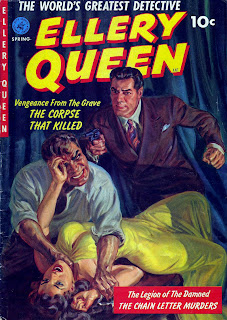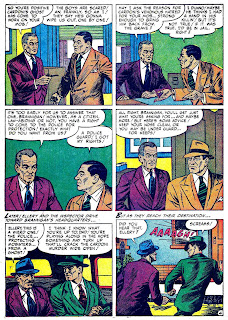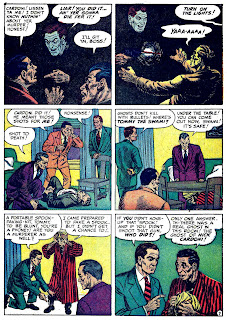
Number 1009
Ellery Queen and the corpse that killed
We featured the Saint on Friday, Perry Mason on Monday, and we're following it up with Ellery Queen. The Saint, Mason and Ellery Queen were born in the golden era of the pulps as leads in detective novels. The Saint was created by Leslie Charteris. Mason was created by prolific Erle Stanley Gardner (who got to a point where he had six secretaries transcribing his tape recorded story dictation). Ellery was created by Manfred Lee and Fred Dannay under the name Ellery Queen.
Unlike this comic book story, which depends on the pseudo-horror angle and less on detecting, the Ellery Queen of the novels is a detective in very clever whodunnits with clues provided for the reader. There was much less finesse and writing skill in this comic book story, but it's still entertaining. The art is by an artist so far unidentified. The style looks familiar, one of those things where I can almost put my finger on whodunnit, but not quite. That's the biggest mystery of "The Corpse That Killed": whodrewit?
At least we know that Norman Saunders did the painted cover for this Ziff-Davis comic.
From Ellery Queen #1, 1952:




















































